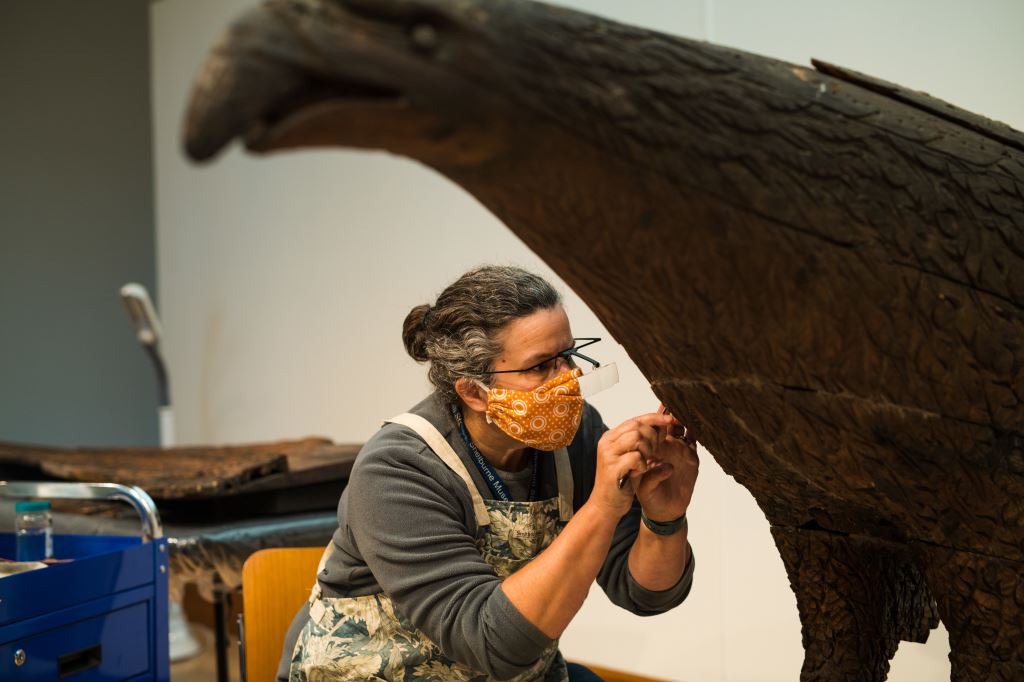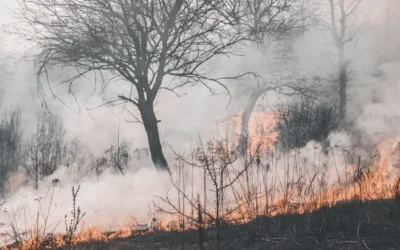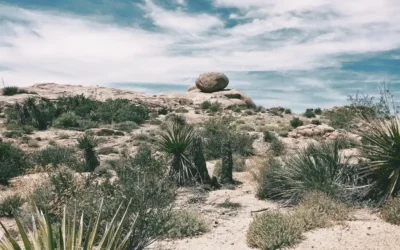At CONSERV we care about collections AND the people who care for collections. In this series of blogs we dive into the stories of some of our favorite customers, what brought them to their current place in their careers, and the unique ways they’re using Conserv. (Banner Photo Courtesy of Shelburne Museum. Photo by Andy Dubak)

Conservator Nancie Ravenel.
Many museum professionals refer to treasured colleagues as their “museum family,” but conservator Nancie Ravenel of Vermont’s beautiful Shelburne Museum means that literally! Her great-grandfather worked for the National Museum, later the Smithsonian Institution, and her uncle was the Head of Exhibition at the National Gallery of Art.
Nancie’s first behind-the-scenes museum experience happened in kindergarten, when her uncle took her to see an exhibition mid-installation. “We talked about different perspectives, how something might look one way to you, but not others,” she recalled to us of her early exposure to the exhibition process.
Nancie initially resisted following in her family’s footsteps. She majored in chemistry in college, but quickly learned medicine was not for her. After she added an art history minor, her uncle connected her with conservators at his work. On their advice, she went to art school, followed by graduate school for conservation. During this time she spent a summer at the Shelburne Museum in Vermont conserving horse-drawn vehicles.
Although she completed fellowships at the Getty, the National Gallery, and the Cleveland Museum of Art, she developed a love for understudied objects. She recalled the Shelburne Museum’s approach for studying horse-drawn vehicles, and when a job opened, she applied. Twenty-three years later, Nancie Ravenel is still there.
A smarter way for teams to work
Anyone who has ever visited Shelburne can tell you there’s no other museum in the world like it.
The museum in Shelburne, Vermont, is the largest art and history museum in northern New England and Vermont’s foremost public resource for visual art and material culture. The expansive collection of 150,000 objects includes American folk art and paintings, Impressionist paintings, textiles, and decorative arts. Beyond the Museum’s cherished carriage collections, Shelburne has 39 exhibition spaces including 25 historic buildings. The collection even includes the steamship Ticonderoga and a lighthouse relocated from Lake Champlain.
Basic collections preservation work at many museums is often done by collections managers and registrars. Although Nancie is part of a Vermont Collections Care group, she’s the only art conservator employed by a museum in the entire state. Given the Shelburne Museum’s collection, it’s no surprise!
Nancie’s former supervisor Richard Kerschner was at the forefront of practical climate control. In his 30+ years at Shelburne, he oversaw the shift from paper hygrothermographs to dataloggers, and was an early user of the eClimate notebook and the PEM monitors. Richard viewed his work with a scientist’s curiosity, which Nancie also has. She constantly experiments.
Climate control takes a lot of effort at Shelburne Museum, so Nancie was always on the lookout for additional tools to add to the environmental monitoring arsenal. “I relied on our protection service officers to manually record a couple times per day what they’re reading off the monitor, as well as the building automation system,” Nancie told us. The computerized building management system sends alarms, but its sensors aren’t located in every space of possible interest on the museum’s campus.
Nancie was always looking to monitor remotely, but wasn’t satisfied when she experimented with another company’s WiFi-connected datalogger and found that coverage was affected by the shifting leaves on trees outside. When she heard about Conserv through social media, she reached out immediately.
Environmental monitoring for teams: A simple way to communicate the issues
Collections care is a team effort at Shelburne. At Conserv, we understand that environmental monitoring has to work for teams. Nancie works within the Collections Department, who are tasked with much of that work. The Museum’s lead art handler is very interested in integrated pest management (IPM), and shares these responsibilities with her. The work of the Buildings Preservation, Museum Services, Protection Services, and Landscape departments also impacts collections and their environments, so Nancie works across all of these departments.
“Having a simple way of communicating the issues is paramount,” Nancie said.
Nancie finds Conserv to be a useful tool to communicate across departments. “The thing I jumped on was the performance report. The preservation head and facilities technician could look at it and have a useful synopsis,” she told us. Because Shelburne has so many spaces, a clean-looking sheet or two could easily communicate about data internally and externally.
Nancie believes getting facilities managers involved and engaged is really important for success, and Conserv’s software shares data in a way that anyone can understand. Conserv allowed greater collaboration between everyone at the institution responsible for collections care.
Our customer’s feedback makes our products better
Conserv has had a relationship with Nancie since 2019, and knows firsthand how the feedback of our users makes our products better. Nancie personifies our company belief that we don’t simply sell sensors, but work with users to build a better collections environment. When we told her our products could have a 2-mile range, her immediate response was, “Cool, I have a mile and a lighthouse, let’s see what you can do!”
Nancie’s first Conserv sensor was an early prototype, but she really became a Conserv devotee last March as the pandemic hit. “When we shut down, you immediately asked us how you could help,” she recollected. Nancie borrowed a sensor from us for two months, securing an important collection that was only visited daily when onsite access to the site was limited.
Nancie is delighted to have Conserv sensors in critical spaces at the museum. What she loves most about Conserv is that we constantly work with museum professionals to build better products.
“You are constantly getting in touch with us about what you’re working on, and asking what I think about it,” she told us. “So much of this work is about listening—and you do that well.”
She told potential customers a few months back about her journey with Conserv, “I didn’t love it then—but I love it now!” We have incorporated Nancie’s feedback to build better products over our years of working with her.
Conserv brings collections professionals together
Nancie has been active in museum professional communities online since the early days of social media. “My first platform was Flickr,” she recollects, laughing about how she created an account to share her intern’s work samples online. “Social media introduces you to parts of the field that may not directly be your own practice, but might be useful down the road.” It was through social media that Nancie encountered Conserv.
But Conserv does more than just help Nancie in her day-to-day work. We care about the betterment of the entire museum field. Nancie also thinks a lot about what it means to be a museum professional. She regularly brings up questions key to the philosophy of conservation work: “What does it mean as conservators to do our jobs in public? How can we make our field more accessible and inclusive?”
Collections managers, facilities managers, registrars, archivists, librarians, and yes, conservators like Nancie are all involved in caring for our shared cultural heritage. Conserv’s platform is an easy way to share and communicate data with anyone involved in object care, no matter their budget, capacity, or skills. As we make collections work more accessible, we are excited to build software for and with collections professionals like Nancie,
If you have any questions about environmental monitoring, integrated pest management, or just want to talk about preventative conservation, please reach out to us! Don’t forget to check out our blog or join our community of collections care professionals where you can discuss hot topics, connect with other conservators or even take a course to get familiar with the Conserv platform.




